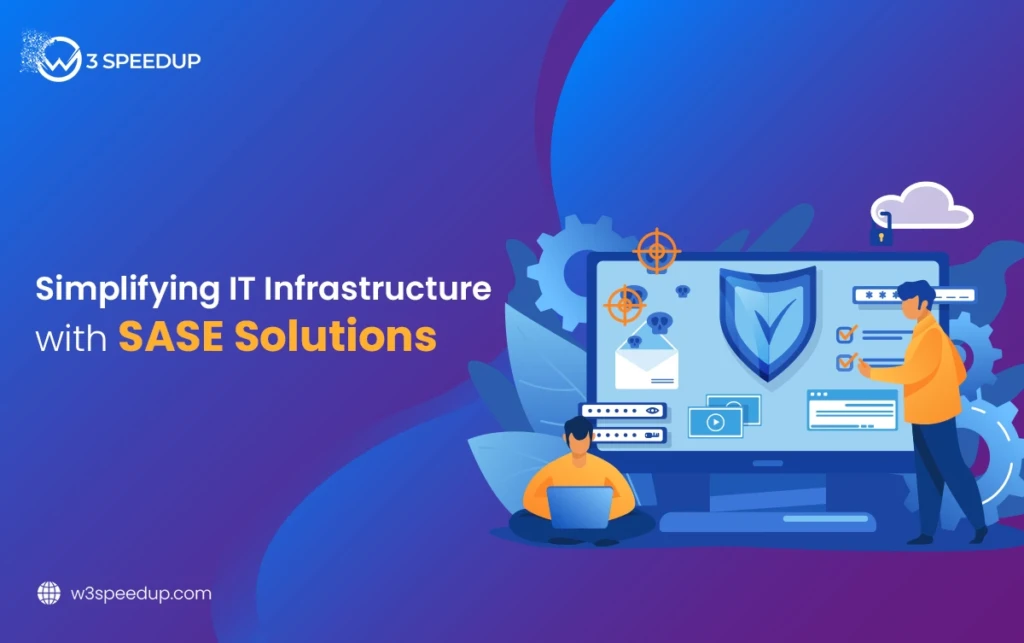Before this article dives further into all the benefits that come with this technological innovation, let’s first understand what it represents. Namely, SASE (Secure Access Service Edge) can be defined as a cloud architecture model that mixes security-as-a-service functions and networks and delivers them as one cloud service.
Its main goal is to expand security and networking abilities. Precisely because of this, people who work from home (or any other location that’s not a traditional office) can make use of a secure web gateway (SWG), firewall as a service (FWaaS), and trust network access (ZTNA).
In addition, the SASE solution consists of SD-WAN and Security Service Edge (SSE). Now, that the basics are covered, it’s time to focus on all the advantages of this solution because there are surely lots of them.
Everything Is A Lot More Accessible To The Users
There’s no denying that the pandemic has drastically changed some things in terms of remote work. Ever since it hit the world, a lot of companies all across the world decided to start implementing it.
These days, many businesses opt for cloud-based services to take remote access to the next level. By virtue of the SASE solution, along with a vast network of cloud Points of Presence (POP), different organizations from all across the globe have numerous options at their disposal when it comes to connecting users and employees to enterprise applications and the web. Furthermore, now that the WAN (SD-WAN) is here, firms are capable of optimizing remote site and user connections to on-premises resources or to the cloud by choosing the most suitable network path for the application.
In these instances, they can resort to multiprotocol label switching (MPLS), virtual private network (VPN) link back to a company network, wireless connection over a local internet breakout on the local SD-WAN device, or direct-to-internet broadband.
Generally speaking, SD-WAN is a perfect alternative for branch office connectivity, however, there are a plethora of users who work remotely who do not have in their possession a company-owned SD-WAN device.
The Forrester Zero Trust Edge model, which is able to complement the Gartner SASE model is one of the first ones that utilized zero trust network access principles to properly and safely connect offices and workers to the corporate and internet applications.
Furthermore, ZTNA enhances performance by moving the stack closer to all the users, along with the application when it’s delivered as a cloud service. Aside from boosting performance, ZTNA’s invention solves the BYOD problem too!
When implemented alongside the SASE solution, ZTNA provides the ability to merge zero trust into a remote access solution, which lowers remote employees’ network access only when they urgently need it for particular tasks.
Merged Routing & Security
SASE solution merges a couple of security functions into a single system and this includes the following:
- RBI
- DNS reputation
- Malware protection
- Zero-trust network access
- Firewall as a service
- Cloud access security broker
- Secure web gateway
- Intrusion prevention
- Intrusion detection
With the proper structure, various SASE mechanisms are capable of executing network behavior cases during which malware starts entering, and, at the same time, attacking internal infrastructure.
Consolidation of different functions into a single product by one vendor can drastically decrease the complexity of applying extensive security functionality. In these sorts of situations, the staff is going to opt for systemwide policy services, which is going to make them a lot more efficient and productive.
Of course, in order to accomplish this, you need to ensure that every single function is merged the right way and that you do not deal with a variety of different parts that are simply joined together.
It Puts End-User Experiences First
This solution offers consolidated management metrics and an interface that allows IT to correlate each user experience with company outcomes. Additionally, it enables businesses to expand security policies and users’ secure access from the network edge to the cloud edge.
In other words, SASE is here to give a stable user experience for both remote and hybrid employees across WAN, endpoint, data center, and cloud. Namely, it’s much simpler and easier to work with a single SASE solution, than it is to work with single-point security solutions and multiple VPNs.
For instance, a centralized and consolidated management interface provides IT with the visibility and control that’s required to tackle security and operations, while, simultaneously, optimizing user experiences.
It’s easy to conclude that both companies and their users can greatly benefit from the SASE solution, which is why (at least according to numerous experts) we can expect more SASE migration in the future.
 Christmas Mega Sale – Enjoy Up to 50% OFF on Every Plan!
Christmas Mega Sale – Enjoy Up to 50% OFF on Every Plan! 



